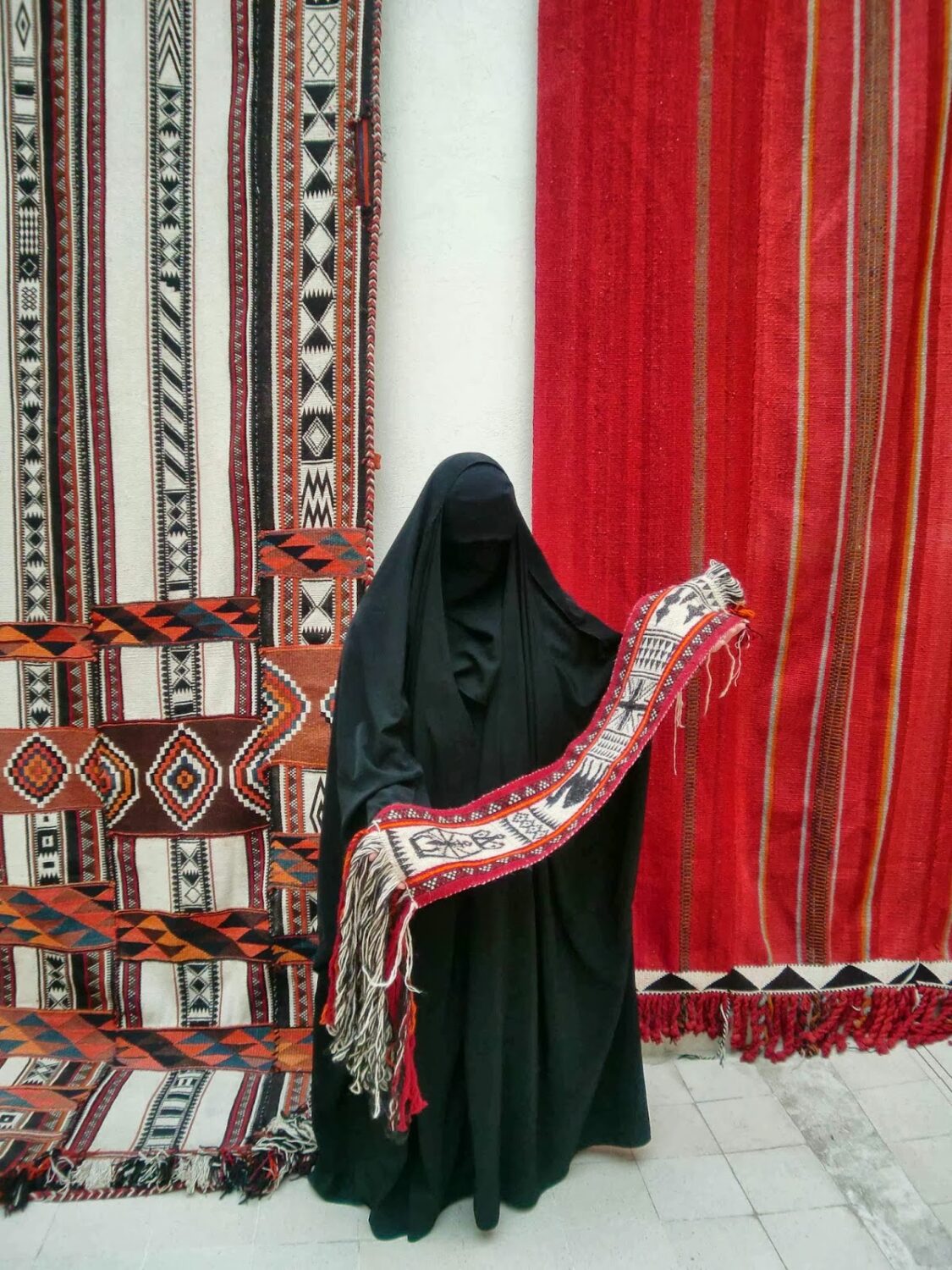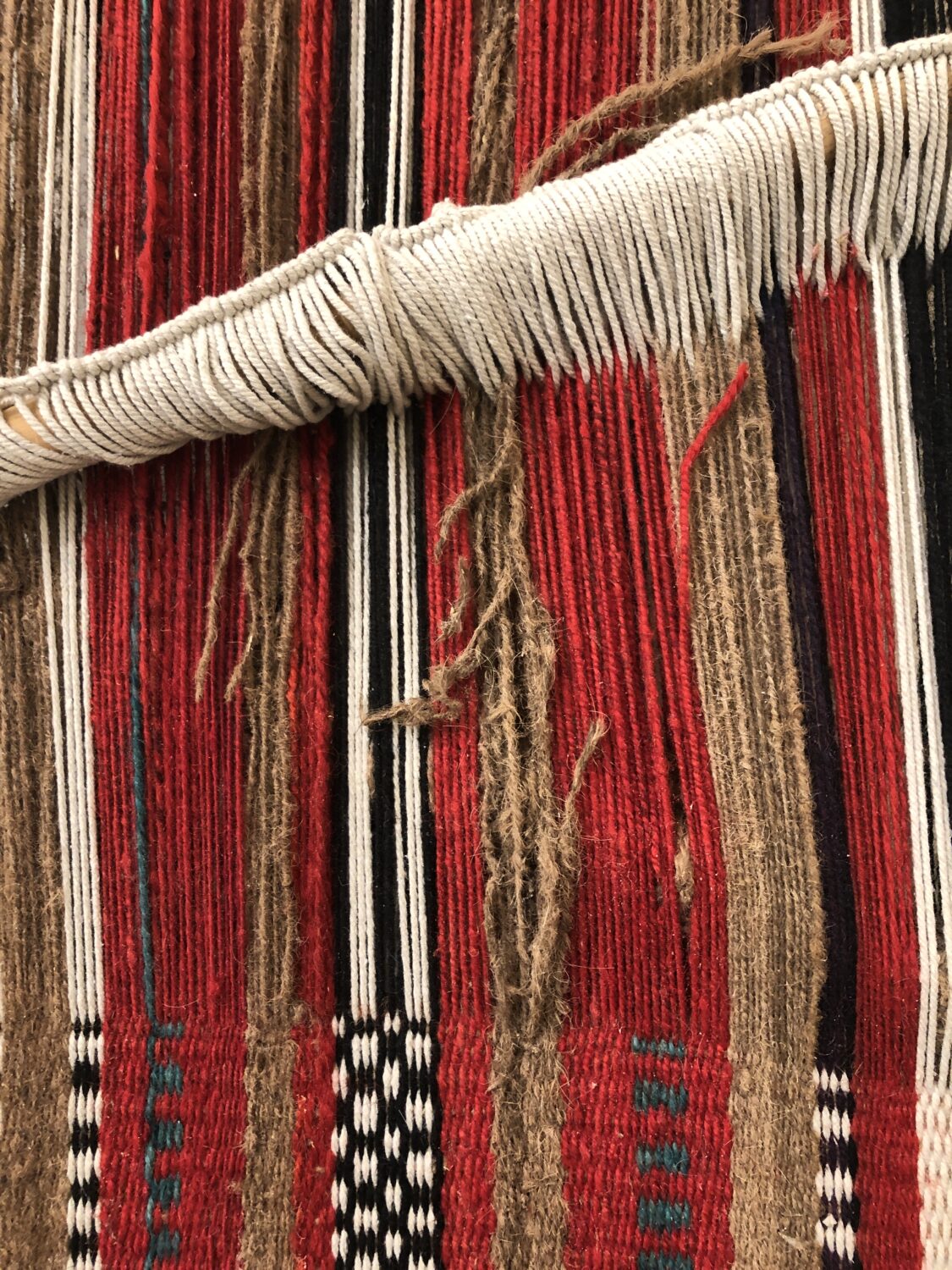Al Sadu - Traditional Bedouin Weaving

By Alison Norquist / Arab America Contributing Writer
Twice now UNESCO, the UN-founded program to save the cultural heritage of populations at risk of being eradicated and their customs, have found that Al Sadu, more commonly known as Sadu, is an artistic, cultural practice worth preserving.
The Fiber in the Desert
The various tribes of the Bedouin are commonly found throughout the Arabian peninsula and in North Africa. Due to this, no one country is their home, two countries could create separate entries in the UNESCO archives for Sadu. These nomadic people, known mostly for being herders in the deserts, primarily raise camels and goats. These fibers, once cleaned and dyed in various colors from henna, turmeric, saffron, cactus, and indigo found in the desert, are then spun into strands similar to what the western world knows as yarn rather than thin thread.

These thick wefts are loaded onto a loom that is low to the ground. Traditionally, the women of the tribes are the ones to weave, spending their time catching up on the news of the families, singing traditional songs, or reciting poetry to one another. Young girls, who spend time with their mothers in the tents, slowly learn the traditions of Sadu first by watching while they play, then slowly being allowed to do tasks related to weaving as they get older. However, due to the shifts of living in towns and the slowly dying tradition of nomadic herding, the art of Sadu is showing a distinct decline in recent years.

Sadu in Use
Traditionally, Sadu fabric was used for tents, rugs, garments, and so much more. The elaborate geometric patterns, inspired by the beautiful nature of the desert and its animals, speak to a universal appreciation for the land while also being wholly original. In more modern uses, such as through Sadu House, Sadu is being featured on everyday items like trimming bags and wallets all the way to large rugs. The Sadu House, which became its current incarnation in 1980, was founded by the Kuwaiti Nation Council for Culture, Arts, and Letters. Sadu was even featured this past year during the FIFA World Cup in Qatar, where the stadium featured patterns found in the traditional weaving of the country’s Bedouin population.
Modern Weavers
Currently, various organizations like Sadu House and The Royal Institute of Traditional Arts in Saudi Arabia, are doing what they can to keep a rich tradition alive. The practice, which was traditionally only performed by women, is now welcoming men into the fold. In more recent years, the Bedouin men who have relocated to more urban areas have taken up the practice to create cloth for their cloaks, known as Bisht. Still, the tradition of Sadu is mostly upheld by women like Noura Al-Omair. She has begun the process of having her original patterns and designs protected by the World Intellectual Property Organization, allowing her to have them trademarked internationally and create a stream of income for her.
Check Out Arab America’s blog here!








